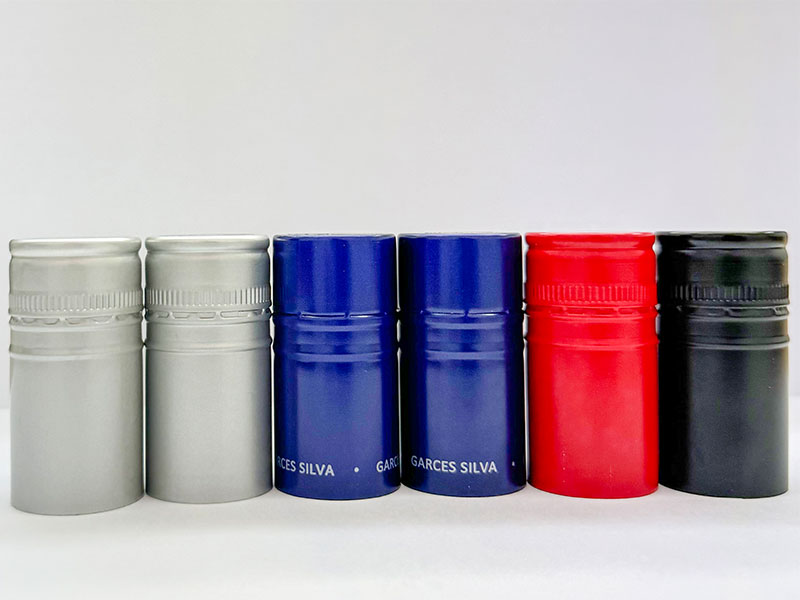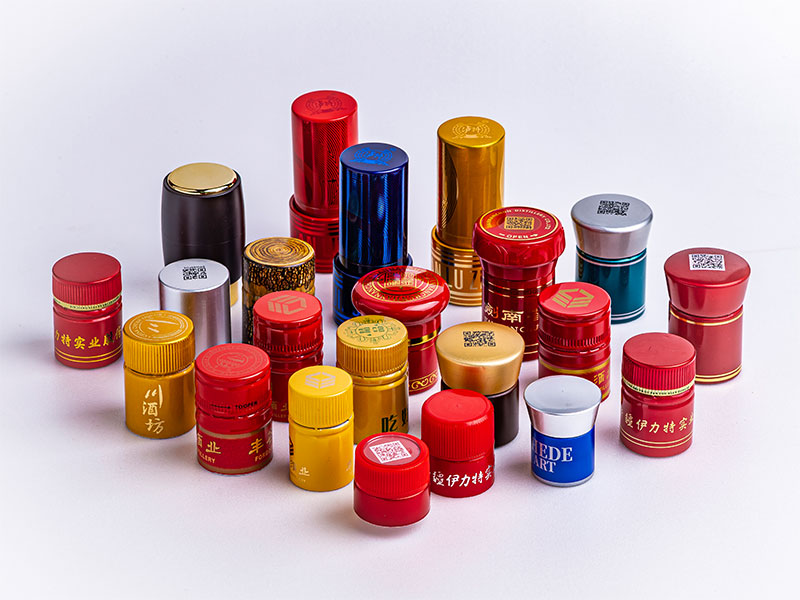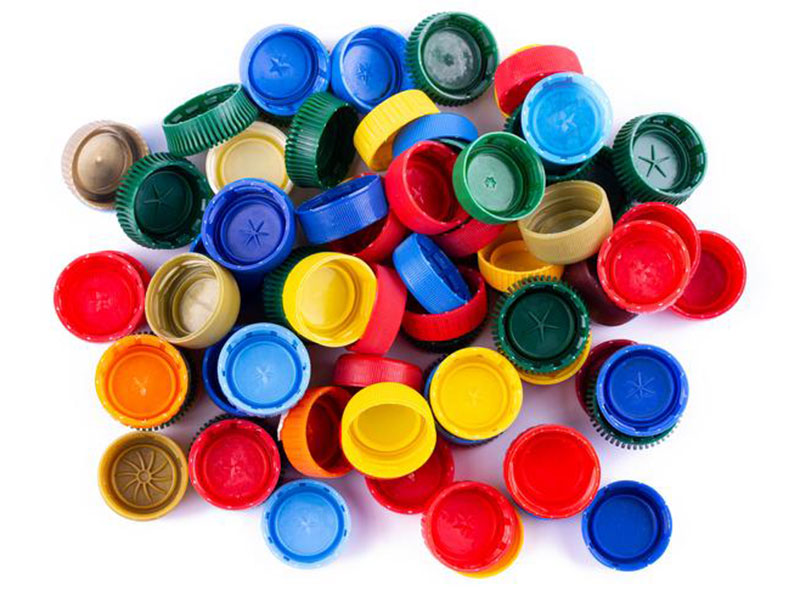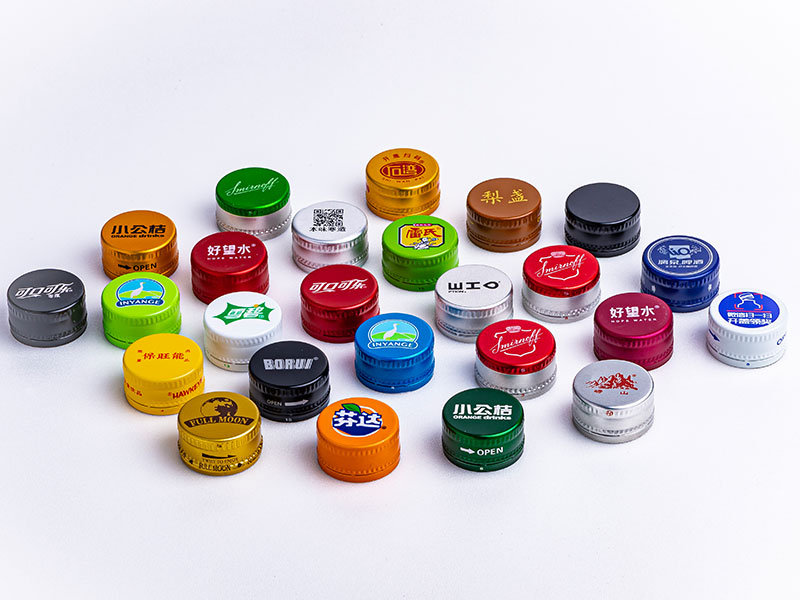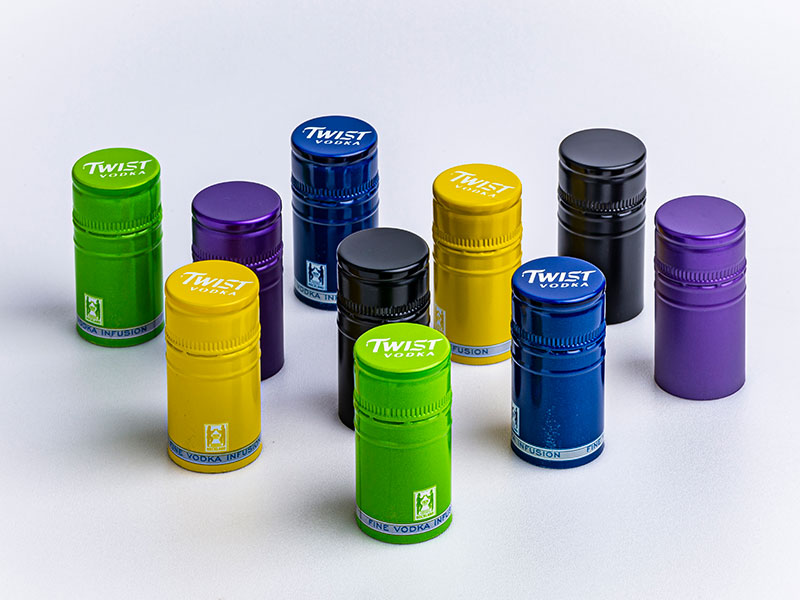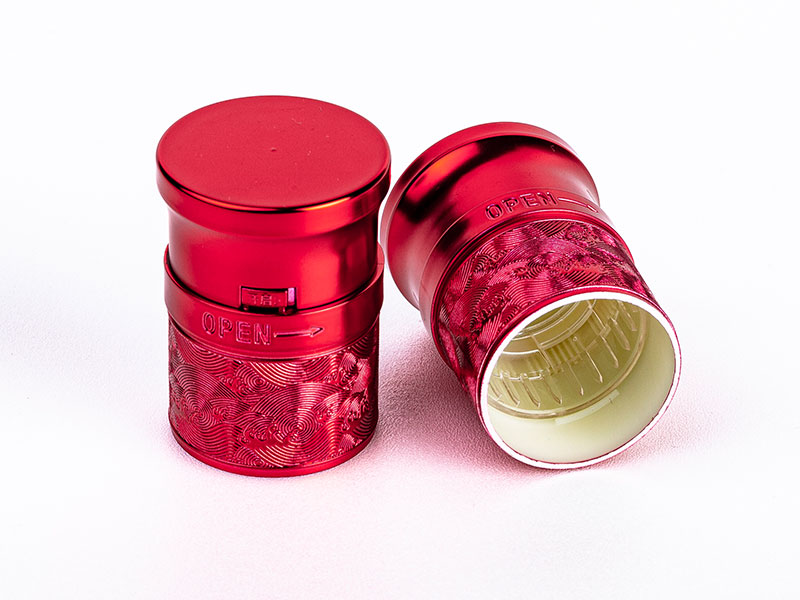Aluminum Wine Closures for Bottles with Tamper Evident and Safety Seal
In the world of wine packaging, where presentation meets preservation and consumer trust, the choice of bottle closure plays a vital role. Aluminum wine closures with tamper evident and safety seals have emerged as an innovative solution, redefining how wineries protect their product integrity while enhancing user confidence.
Aluminum Closures for Wine Bottles
Unlike traditional cork or synthetic caps, aluminum wine closures consist primarily of a precisely engineered aluminum shell that fits securely onto the bottle neck, combined with an inner sealing layer that ensures wine freshness.
The distinct advantage lies in the integration of tamper-evident and safety seals—features that unequivocally signal any unauthorized access, preserving both the product's sterility and consumer trust. These seals represent a physical and psychological barrier helping identify any breach.
Material Composition and Alloy Selection
The choice of aluminum alloy is critical to achieve the ideal balance between mechanical strength, formability, and corrosion resistance—the last especially crucial given wine’s acidic content.
Typically, closures use the following industry-standard aluminium alloy hypothetical composition:
| Element | wt.% |
|---|---|
| Aluminum (Al) | Balance (94-96) |
| Magnesium (Mg) | 2.0 - 3.5 |
| Manganese (Mn) | 0.3 - 0.9 |
| Silicon (Si) | 0.1 - 0.6 |
| Iron (Fe) | 0.3 - 0.7 |
| Copper (Cu) | <0.1 |
This composition aligns with common 3000 and 5000 series alloys, such as 3004 or 5052, known for moderate strength and excellent corrosion resistance.
Tempering and Mechanical Properties
Aluminum closures undergo specific tempering processes to optimize their structural performance:
- H14 Temper: Partial hardening, striking an ideal balance of ductility (elongation ~10-15%) and yield strength (~200 MPa), allowing it to deform without fracturing during application but strong enough to resist tampering.
- H18 Temper: Full hardening, provides higher strength (~260 MPa) but less ductility. This state might be used where additional tamper protection takes priority over flexibility.
These temper settings influence closure application by determining how the cap “locks” onto the bottle lip and how the tamper evident band tears if removed.
Product Implementation Standards and Requirements
Producing a compliant, reliable aluminum wine closure involves coordination with international packaging and safety standards:
- ISO 9001 Certification to ensure manufacturing quality consistency.
- ASTM B221 requirements for aluminum alloy aluminum profiles.
- Wine Packaging Industry Tests, including seal tightness verification (vacuum pressure retention) and safety band tear strength, ensuring clear tamper indication without premature failure.
- Food Contact Compliance: The inner sealing liners applied must meet FDA 21 CFR 175.300 and EU Regulation 10/2011 standards, ensuring no harmful substances leach into the wine.
The Tamper Evident and Safety Seal Feature: How It Works
The cap design is ingeniously segmented to include two mechanical zones:
- Main Body Closure Zone: Provides the primary seal and holds the wine oxygen barrier liner, safeguarding flavor and aroma.
- Tamper Band Zone: Attached by thin tabs or scored lines; appears firmly connected on initial inspection but designed to break cleanly upon cap removal.
This system ensures that any previous opening is immediately visible without compromising on easy one-hand removal—a critical user-friendly touch.
Chemical Considerations and Wine Interaction
Aluminum’s natural oxide layer forms a protective barrier against corrosion. However, in acidic conditions of wine (pH ~3.0-4.0), this layer’s stability can be challenged. The seal liner material must therefore both protect against metal ion extraction (which could taint wine or affect surface physics) and prevent corrosion shocks, especially in sparkling wines which are under CO2 pressure.
Typical liners integrate inert plastics such as expanded polyethylene (EPE) or ethylene-vinyl acetate (EVA), sometimes coated with additional barrier polymers, ensuring no chemical reaction between aluminum and wine.
Advantages Beyond Security: Sustainability and Design
Aluminum closures contribute to sustainable packaging since aluminum is infinitely recyclable with lower carbon emission footprints versus resin plastic closures.
Furthermore, aluminum provides excellent surface finish options, accommodating intricate embossing, coloration, and vibrant branding around the bottle neck without fear of substrate degradation—a worthwhile marketing advantage.
Final Thoughts
Aluminum wine closures with tamper evident and safety seals represent more than just a physical bottle cap; they epitomize integrative innovation blending materials science, consumer protection, and premium aesthetics. The marriage of well-chosen aluminum alloys, rigorously controlled tempering, compliant consumer safety features, and corrosion-resistant seal materials positions these closures at the cutting edge of wine packaging technology.
For winery bottlers searching for a closure system that combines consumer trust, wine freshness, safety, and environmental responsibility, aluminum aluminum wine closures truly set the standard.
Keywords: Aluminum Wine Closures, Tamper Evident Caps, Wine Bottle Seals, Aluminum Alloy Closures, Wine Packaging Safety, Aluminum Temper, Aluminum Seal Liner, Wine Bottle Security, Corrosion Resistance, Food Safety Standards



